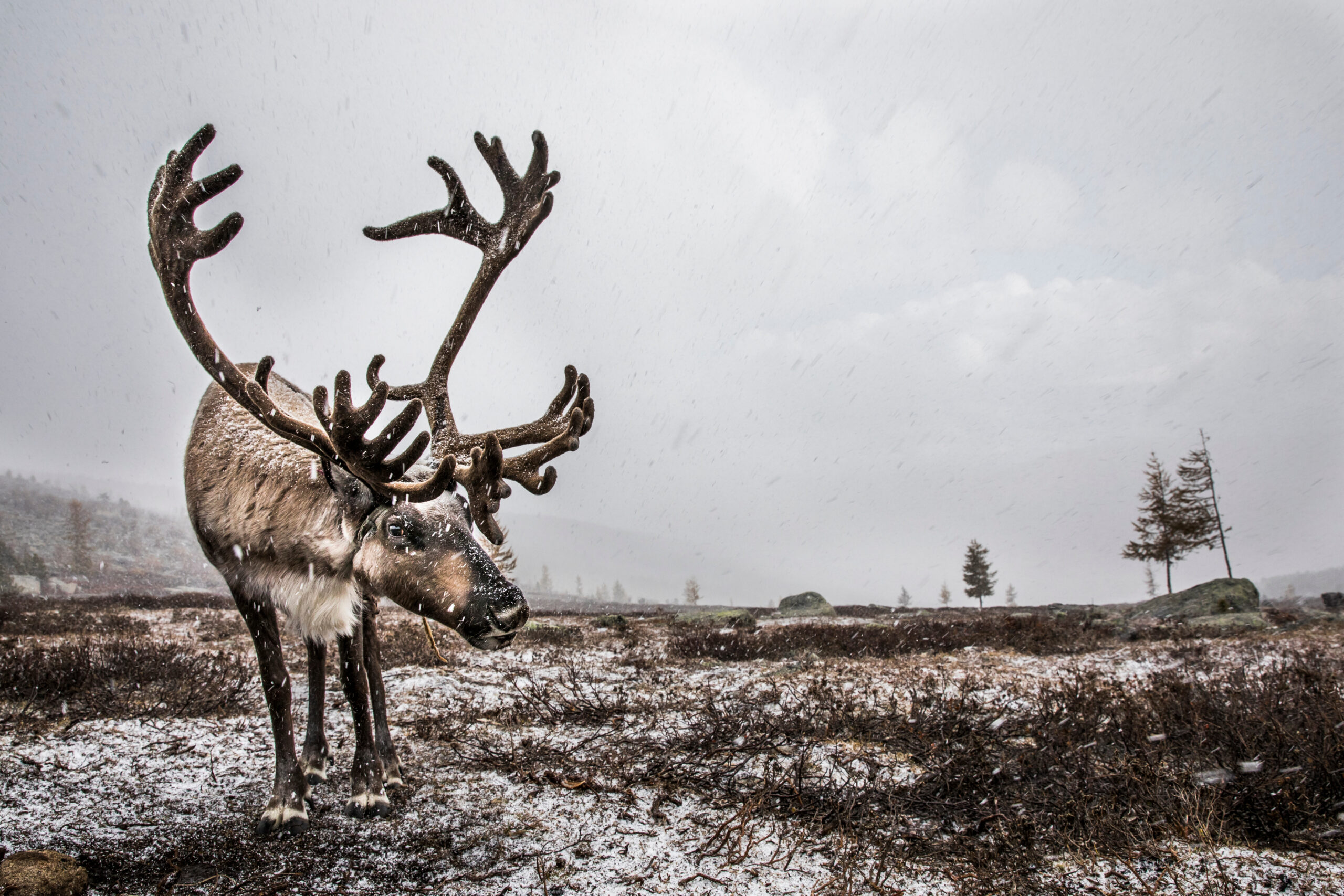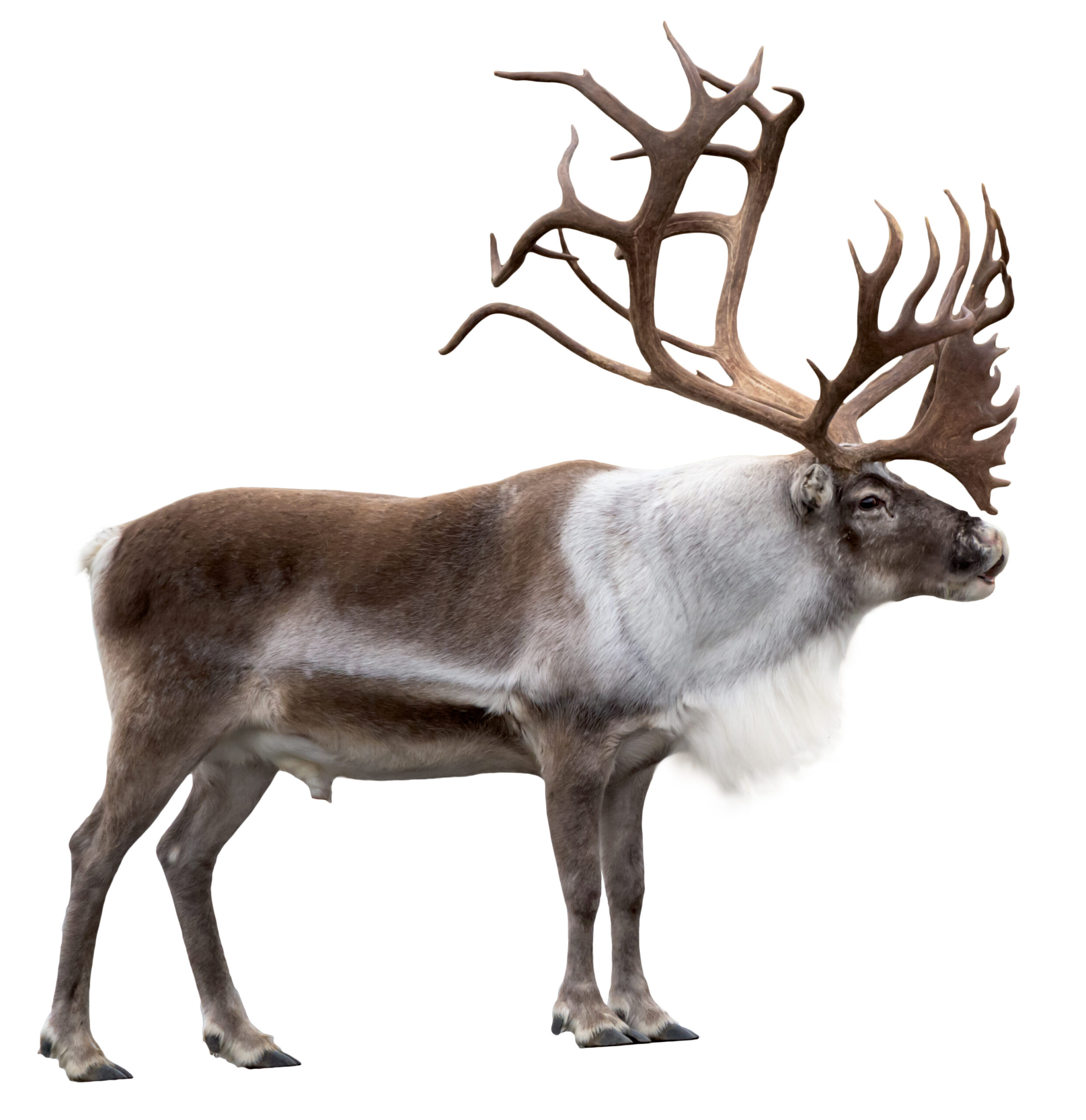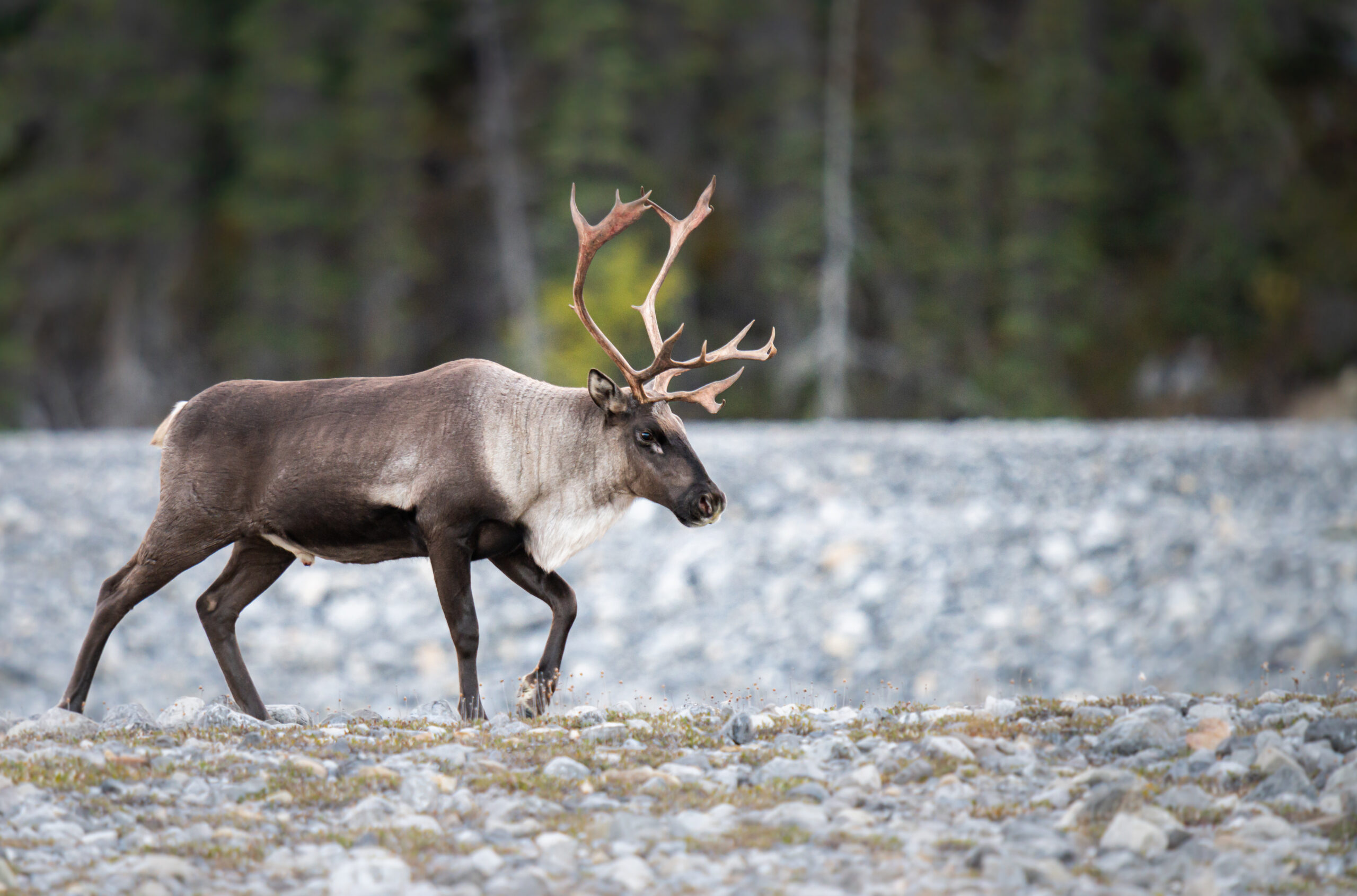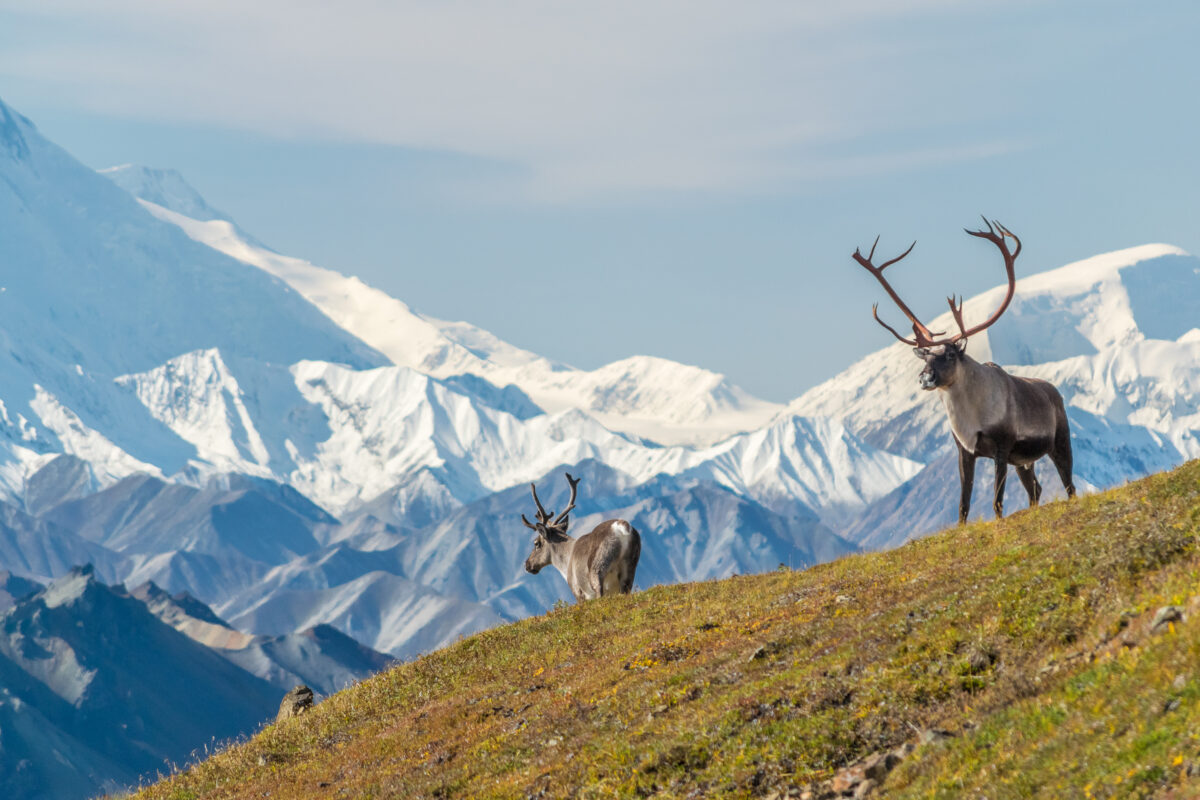Majestic Caribou Bull in Front of Mount Denali, Alaska, Adobe Stock, By Martin Capek

PRESENTS
The Caribou
By Katelin Kukk
Our journey through time begins with the majestic creatures Rangifer tarandus, otherwise known as caribou or reindeer depending on the area. Their oldest remains are dated back 1.6 million years ago in Yukon, Canada. Caribou have been one of the most impactful forms of wildlife for the first indigenous people that lived in North America. They provided meat, fur, and tools for as long as people lived in the region.
Caribou are now found in North America, Russia, and Scandinavia. Living in the arctic and mountainous tundra, as well as the northern forests, our four-legged friends have proven to be some of the best deer species to withstand the cold.

Reindeer in a Snow in Northern Mongolia, Adobe Stock, By Katiekk2
Caribou are extraordinarily unique because of their adaptations to the ever-changing seasons. Their hooves can grow or shrink in size depending on their surrounding temperatures; in the winter, their hooves contract and harden to help them walk through the snow and ice, while in the summer, their hooves expand and become more sponge-like to walk over a variety of different terrain.
Caribou are nomadic animals that consistently migrate in search of areas more abundant with food. Equipped with an incredible sense of smell, caribou are able to discover food under even several feet of snow. To aid in digesting and absorbing all the nutrients from the tough plants they forage, caribou, like other ruminants, have developed a four-chambered stomach.

Male Reindeer (Rangifer tarandus), Adobe Stock, By Robin
These primeval survivors have also adapted to their conditions by having two layers of fur to protect themselves from the harsh cold and to aid in swimming. Their first layer consists of a thick wool-like hair while their top layer is comprised of a longer, hollow hair.
Unlike most deer, both male and female caribou grow antlers, but each use their antlers in different ways. Females use their antlers to scrape away snow from buried vegetation and also to protect their food from other animals, while males mainly use their antlers to fight. The shedding of velvet from their antlers, which takes place at the end of August, marks the start of rutting season, when males will fight each other for mates in a contest of courtship.
During this time, the back of the male caribou’s neck will swell to help with extra protection, because of how violent this season can be. A considerable number of males sustain severe injuries or even die from rival males or predators. Normally, caribou do not actively engage in aggressive behavior, but it is advised to steer clear from male caribou during this testosterone-filled season.

Mountain Caribou, Adobe Stock, By Jillian
To conclude, caribou are an impressive species that have survived millions of years throughout diverse changes in climate. While their unique adaptations to cold environments have ensured the caribou’s survival since even the last ice age, these same traits could signify danger for them going forward. Let’s hope with the global threat of rising temperatures, that caribou can resist the oncoming heat and continue to be primeval survivors and not primeval relics.
-Katelin Kukk
Harleysville, Pennsylvania
– – –

NatEnvo was formed by BioTriad Environmental, Inc. to provide entertaining and informative media while keeping the wonders of nature in the public eye.

Spectacular creatures roamed the earth in the time long before the history of man. Species alive so far in the past, the only traces we find today are bits of rock and stone. Ages faded to dust in the wind. Yet there are those who remain. We call them Primeval Survivors. Do these remnants of the past hold the secrets of the ages?


